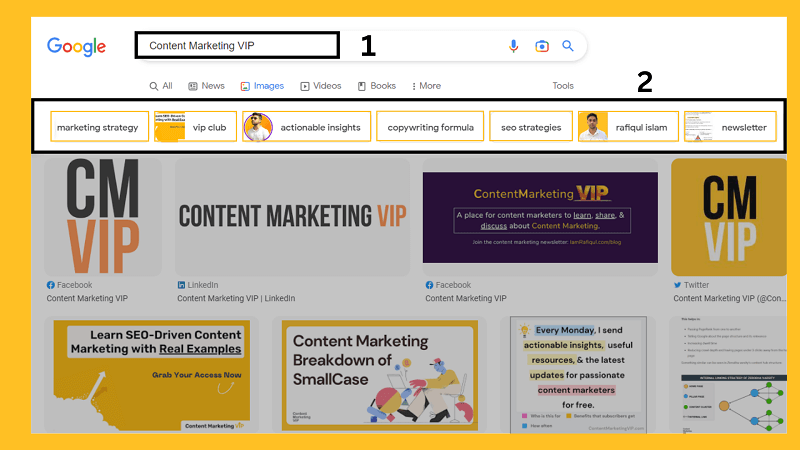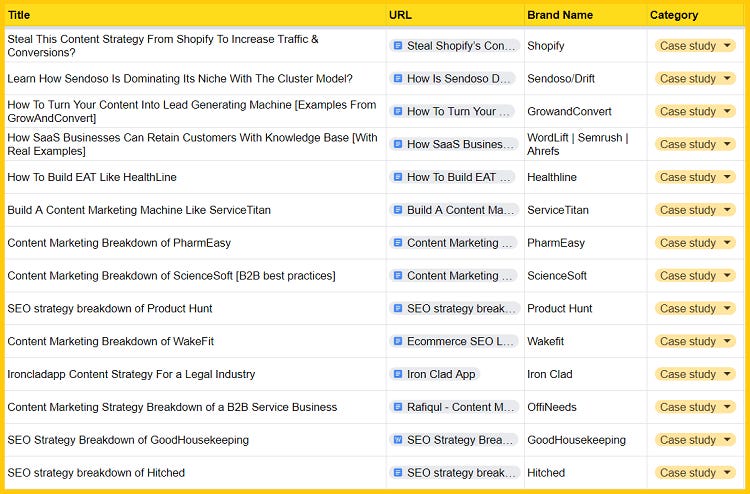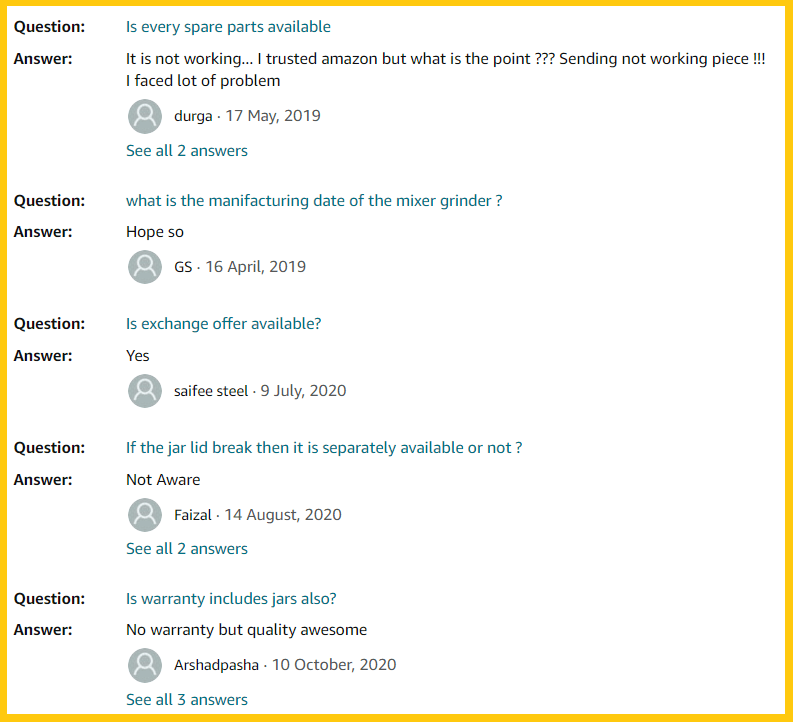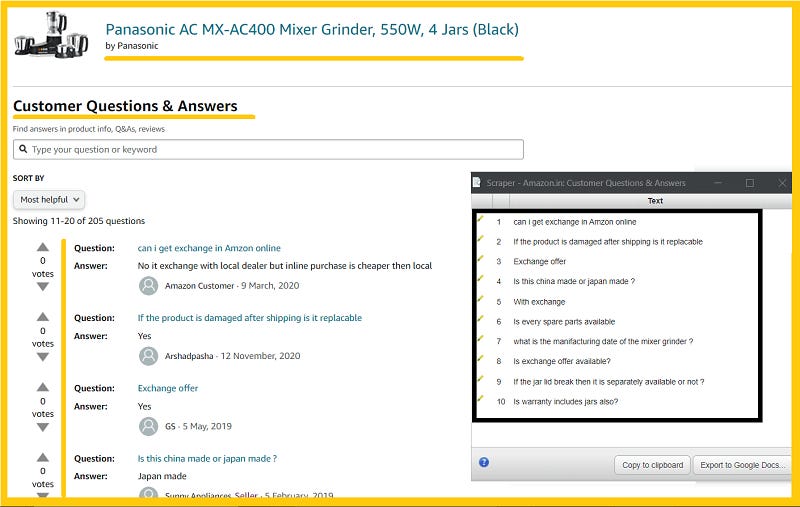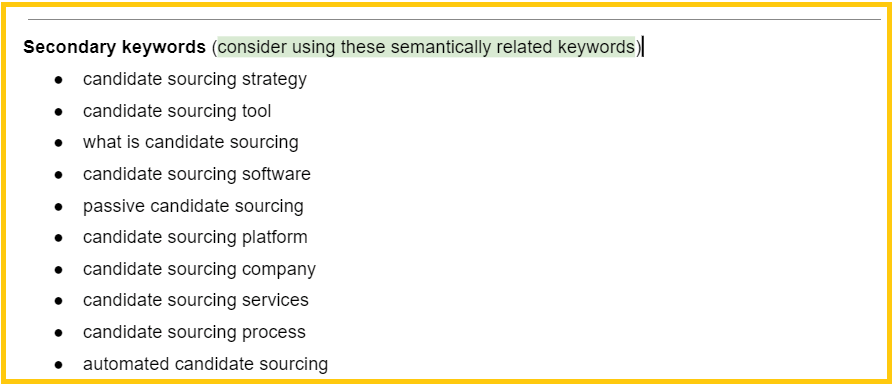🎯 Actionable insights
💡 1. Quick SEO tip to improve your brand presence on Google
1. Type your brand name in Google (e.g., Content Marketing VIP)
2. Go to the 'image' tab.
3. Check all the entities associated with your brand name.
Here’s an example for the brand name ‘content marketing VIP’:
Now, ask yourself:
Are these entities closely related to your brand or business offerings?
Ideally, the 'image tab' for your brand name should display relevant entities such as services, founder name, topics covered in your site, etc.
For example:
If you search for ‘Zoho,' it displays terms such as:
CRM
Software
Accounting software
Project management, etc.
Likewise, displayed terms for the brand 'Semrush' are:
Keyword research
Marketing
Competitors
Backlinks
Site audit, etc.
Now, perform the search with your brand name.
If it shows irrelevant terms, then it means you'll need to work on feeding Google information about:
What your brand is all about
Related topics associated with your brand
Possible solutions:
Use schema markup to add specific details about your brand
Use 'About Us' to share information about the business, founder, types, services, etc.
Publish blog content related to your niche
Claim your social media and business directory profiles with unique content about the brand (third-party sources also affect the results)
Track the changes over time.
👉 Access SEO case studies of top-performing sites
⭐ Unlock SEO breakdowns of high-performing sites in search
When you join the Content Marketing VIP club, you'll unlock 30+ resources on:
SEO case studies
In-depth guides (EAT, Blog UX, Content briefs, etc.)
SEO audit
Frameworks and SOPs
You’ll also get access to new content going forward.
This should be expensive, right?
The content marketing VIP club has a yearly membership option which costs you only $27 annually.
That means you'll spend around only ₹6 per day to reach the top category of SEOs. Now, the choice is yours 👇
If you're unsure whether this is right for you? DM over LinkedIn, and I'll help you decide (Don't worry, I'll never try to convince you to buy)
👉 Join Content Marketing VIP club membership
💬 Bite-sized insights
💡 1. Strategy to rank product pages higher and increase conversions (by Louis Smith)
To improve the ranking and conversion of product pages, your product page should answer the common questions and doubts your target customer asks.
But how do you know what questions people have about a specific product?
Louis Smith shared a strategy to find product-related questions from Amazon (using a free chrome extension).
Here’s the process:
Step 1. Download the Scraper chrome extension
Step 2. Visit the Amazon product page’s ‘Questions & Answers’ section
Choose the product type that you want to optimize on your eCommerce store.
For example:
Selling a mixer grinder? Then visit a mixer grinder product page on Amazon and go to the Q&A section
Step 3. Right-click on any question to use the chrome extension (Scrape similar)
It will automatically scrape all the questions for you.
Step 4. Choose relevant questions and cover them on your product page.
This way, your product page will answer real questions and doubts of your target audience. And it also improves the page relevance in the search.
Tip: You can do the same for Reddit and other platforms to improve page relevance.
👉 Insight from Louis Smith, eCommerce SEO consultant
💡 2. Using semantically related keywords in your content the right way
If you're a content writer or SEO, you've seen secondary or semantically related keywords in content briefs.
One common mistake I notice is in the approach of using secondary keywords.
Some content writers just focus on adding these keywords X number of times in the content.
Here is what I suggest to our content writers (with an example):
(Secondary keywords example)
For example:
In the above screenshot, you’ll find keywords like
Candidate sourcing platform
Candidate sourcing process
❌ Here’s what content writers normally do: “Let’s mention these keywords in the introduction and within the body content.”
✔️ Here’s what content writers should do: “Instead of just mentioning the keyword ‘Candidate sourcing process’ a couple of times, it is important to briefly explain the sourcing process with steps.”
Or, “let’s create a subheading (<H2>) in the content to explain the complete process of candidate sourcing.”
Tips for content writers:
Treat every keyword or entity as a closely related sub-topic for the page.
Instead of mentioning these keywords X number of times, briefly explain the sub-topic and align it with the main page topic.
Sometimes, creating a sub-heading makes more sense than just mentioning the keyword in the introduction or body.
Try to build a relation between the page topic (target keyword) and secondary keywords.
👉 Insight from Content Marketing VIP
💡 3. Improving existing content is a low-hanging fruit for higher ranking and site traffic
Already have hundreds of articles on your website?
If so, then take time and analyze their performance instead of creating new ones.
Find pages:
ranking from 11th to 30th position
With high impressions and low CTR
With no traffic and backlinks - delete/redirect/merge?
With the most and least conversion rate
Next, create action items for each page. This will help you understand what actions to take next for pages.
Here’s an example of tracking content audit with clear action items:
👉 Insight from Content Marketing VIP
🗓️ Free resources/ tools
💡 1. Generate meta descriptions of pages in bulk using Open AI (free tool)
If you’re manually writing meta descriptions of pages one by one – you’ll know how much time and effort it takes to generate meta descriptions for hundreds of pages.
This is where this tool helps you save time.
Here’s how this works:
1. Upload a list of page names
2. Share product USPs (this will personalize your meta description)
3. Brand name
4. Select the language
Next, it will generate and share meta descriptions of all pages at once.
An example:
👉 Try meta description generator for free
💡 2. New tool to find real questions from real people in your niche (PeopleAsked)
PeopleAsked is a freemium audience research tool that helps you find questions asked by your audience on the internet.
The best part about the tool is that PeopleAsked pulls questions from many sources, such as:
Google PAA
Google autosuggestions
Quora
Reddit
Amazon
Youtube
You can use this tool to perform content research, audience research (find real problems of your audience), and find new content ideas.
An example:
👉 Find questions asked by your audience (using PeopleAsked)
😄 Have Some Fun
"Bet some of y'all will find this relatable ☺."




